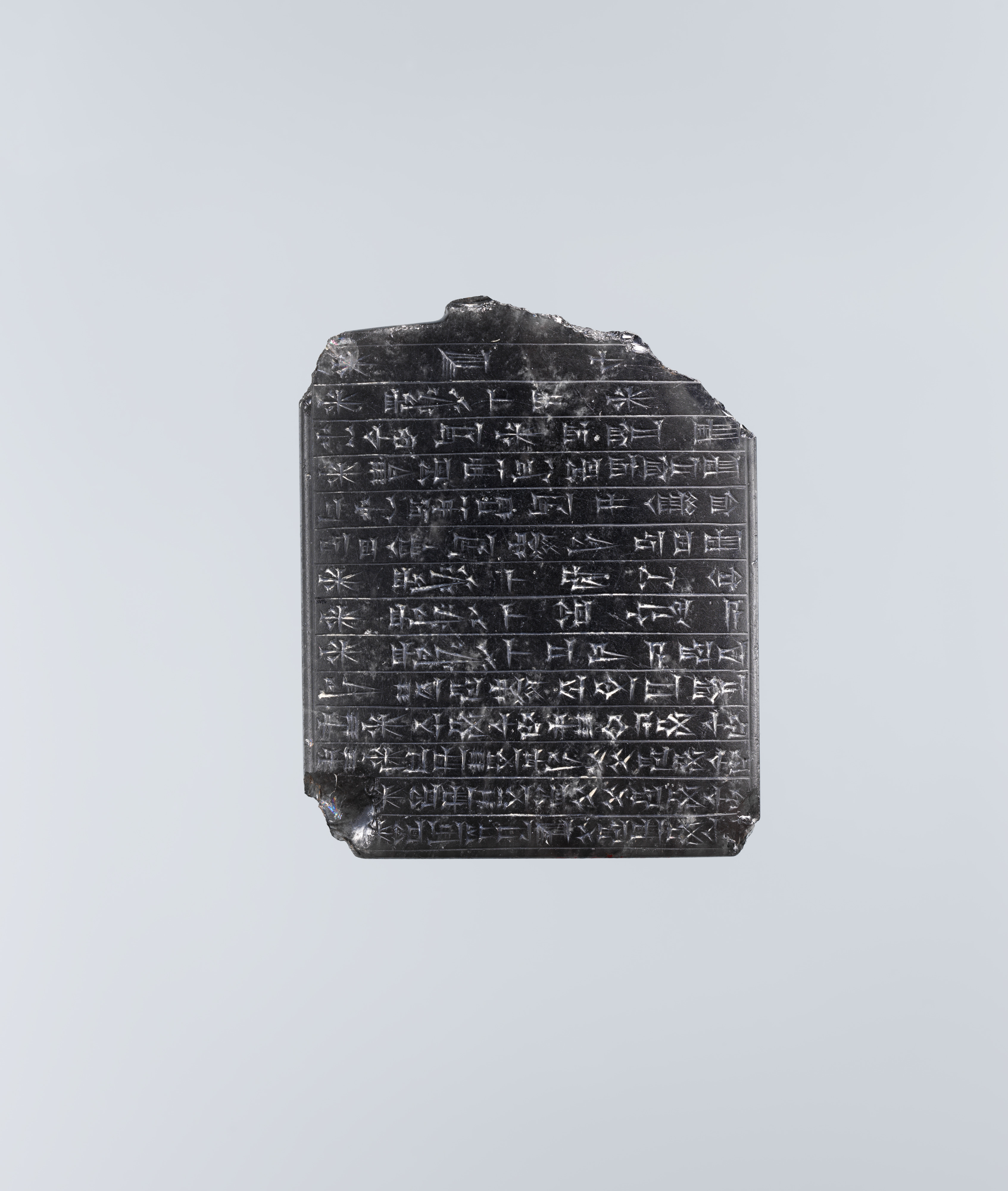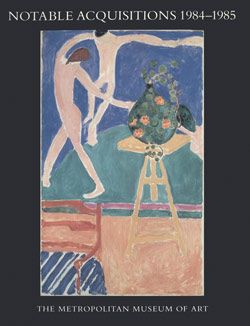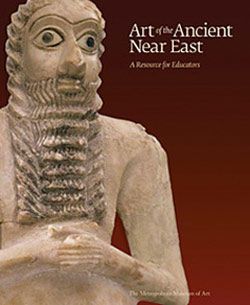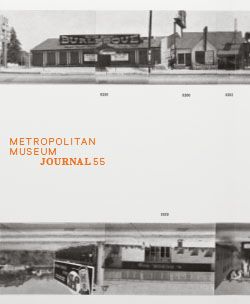Amulet with a Lamashtu demon
Not on view
This plaque is made of obsidian, a naturally-occurring glass produced by volcanic activity, and finely carved in intaglio, in which a design is carved into a flat surface, creating a negative image. The top edge of the rectangular plaque is damaged, but enough remains to indicate that it originally had a projecting element at top center, probably drilled horizontally in order to allow the amulet to be strung and worn on the body or otherwise suspended. The image and text both relate to Lamashtu, daughter of the sky god Anu. This powerful demon was cast out of the heavens, in some accounts because she requested to dine on the flesh of human babies. Restless and angry, she roamed the earth violently attacking vulnerable creatures, especially pregnant mothers and newborns. Lamashtu is shown with a tall, sinewy human body, with stringy muscles emphasized by the parallel striations in the carving. Her head is that of a lion-griffin, with pointed ears and open, roaring mouth from which the tongue protrudes. She holds her arms symmetrically, bent at the elbows, with clawed lion’s paws held upright in an aggressive posture; her feet take the shape of the talons of a bird of prey. In other images of Lamashtu, a puppy and a piglet are shown suckling at her pendulous breasts; here, the adult animals simply flank her, facing towards her. The objects surrounding her are meant to be gifts, offered to placate her: a comb, spindle, and pin, whose pointed end is visible beneath the broken area at top left, are domestic attributes associated with women, while the animal limb at upper right may be a food offering. The arrow-shaped object pointing to her lower back is not well understood but could be intended as a weapon used against the demon. An inscription in Akkadian, written in cuneiform script, runs around the central panel, serving to imprison this fearsome creature. The text, which continues across the entire back of the amulet, is similar to that found on other Lamashtu amulets, addressing her as "exalted lady" and calling upon multiple gods to exorcise her. Over sixty Lamashtu amulets have survived, most dating to the early first millennium B.C. They vary widely in material and carving style, and many also include Pazuzu, king of the evil wind demons, shown driving Lamashtu back to the netherworld. On view in the museum is a pendant in the form of Pazuzu’s head (1993.181). Images of both demons were used for personal protection by people in the ancient Near East against the destructive, chaotic power of Lamashtu.
This image cannot be enlarged, viewed at full screen, or downloaded.
This artwork is meant to be viewed from right to left. Scroll left to view more.






